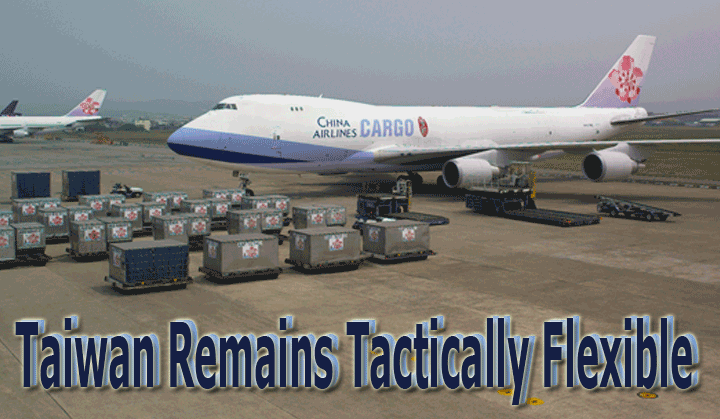
Taiwan-headquartered China Airlines
is optimistic about freight markets in 2015 but determined to remain tactically
flexible in the face of stiff competition and fluctuating demand.
Jeremy Chang, vice president Cargo Sales
& Marketing Division, foresees a slow but steady upward recovery for
CI’s air cargo division after suffering yearly declines in recent
years.
“Over the last five years, the volumes
of China Airlines have been decreasing 1.7 percent on average each year
due to the world economy struggling to recover after the eruption of the
global financial crisis, but the outlook for air cargo is clearly getting
better for the future,” he told FlyingTypers.
“2015 is shaping up in line with a
growth expectation of 4-5 percent, according to IATA’s forecast.

In early 2015, thanks to congestion at
U.S. west coast ports, both the volume and the rates of global air freight
showed a significant increase. There is no doubt the best growth lane
is Transpacific.”
CI operates 18 freighters alongside its
64 passenger aircraft, allowing it to maintain stable service and also
giving it the flexibility to withstand periods of low demand and high
supply across its cargo network, which now covers 93 destinations in 27
countries across Asia, Europe, and America.
“Transpacific is our largest lane
by volume and value for sure,” said Chang. “The outlook for
air cargo is clearly getting better.
“However, demand for air cargo exports
from Taiwan is still growing more slowly than global economic activity
and competitive pressure remains intense.
“Electronic equipment, machines, medical
and technical equipment, etc. are the main exports from Taiwan.”
As the idling of three of its freighters
in 2012 illustrated, CI prides itself on its flexible approach to capacity
management. “We keep a close eye on the market and adjust our product
mix, network, scheduling, and management of marketing channels and revenue
periodically,” said Chang. “Our cargo division turned profit
from deficit in Q4 2014 and it contributed 32.8 percent of revenue in
Q1 2015.”
He said CI was also continuing to develop
and market its sea-air products. “By combining the economies of
ocean freight with the speed of air freight service via TPE—our
main transit hub and home base at Taiwan—China Airlines offers cost-effective
and seamless sea-air products from Asia-Pacific areas to global destinations,
especially to North America,” he explained.
CI launched a new freighter service from
Taipei to Shenzhen in March 2015, offering three flights per week. “The
route will promote closer business and investment between Taiwan and Shenzhen.
Shenzhen is our seventh destination in China,” he said.
The new service took CI’s total cargo
operations to 13 flights per week to and from China, where the carrier
also offers services to Chongqing, Guangzhou, Nanjing, Shanghai, Xiamen,
and Zhengzhou.
“We expect to explore the cargo market
and meet the growing demand for shipment of consumer electronics and express
air parcels as Shenzhen is a major logistic hub for e-commerce and online
shopping,” he said.
China Airlines was the first airline from
Taiwan to join SkyTeam air cargo alliance and continues to draw on the
agreement to bolster its network and maximize throughput.
“As a SkyTeam Cargo member, China
Airlines has developed an extensive product line and enjoys joint purchasing
and marketing benefits with other member airlines,” he said. “Not
only does this simplify the shipping process but it also provides standard
products across SkyTeam Cargo members.
“All four of our global products,
including Equation, Cohesion, Variation, and Dimension, are offered by
all member carriers to facilitate the movement of cargo seamlessly across
our entire combined network. It’s a customer friendly service, ‘Just
pick and ship.’”
As with its network and product portfolio,
CI also examines the pros and cons of its global transit locations on
a regular basis. This saw the carrier switch hubs in the Middle East earlier
this year. “After carefully evaluating the market potential, operating
flexibility, and airport facilities/capacity, Dubai World Central (DWC),
the main hub connecting flights between Europe, Africa, and Asia, has
been our new transit station to replace Abu Dhabi (AUH) in the Middle
East. This started from April, 16, 2015.”
SkyKing |





